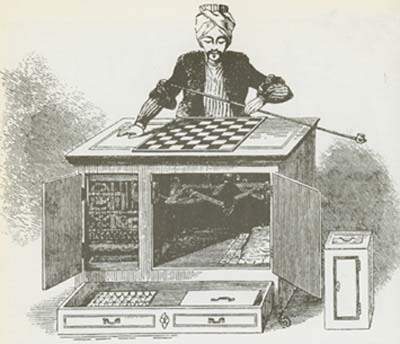The Lost Museum Archive
Automaton Chess Player, 1770
Wolfgang von Kempelen’s mechanical chess player was one of the most famous automata of all time. The automaton, produced in 1770, bested a host of chess experts, European royals, and celebrities in live chess matches. The automaton chess player fascinated the public because it not only imitated human behavior, it appeared to be a “thinking machine.” German inventor and showman Johann Maelzel brought the device to the U.S. in 1826, where it sparked heated debates among audiences and journalists about the mystery of its operation (an 1837 newspaper expose revealed the presence of an assistant concealed inside the cabinet). Barnum claimed that Malezel—through his use of the press to inspire public conversation about the attraction’s relative authenticity and deception—influenced his own career as a showman. A fire at the Chinese Museum in Philadelphia in 1854 destroyed the automaton chess player.

Source: Mary Hillier, Automata and Mechanical Toys: An Illustrated History (London: Jupiter Books, 1976)